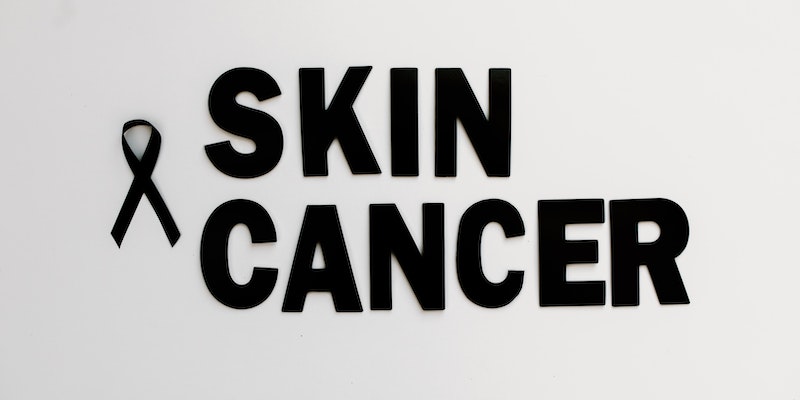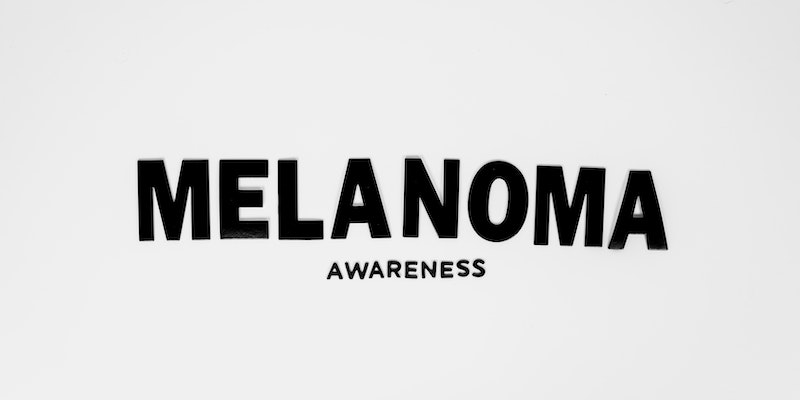Squamous Cell Carcinoma: A Closer Look
Oct 02, 2023
Squamous Cell Carcinoma (SCC) is a common skin cancer, with over a million US diagnoses annually. Squamous cells in the epidermis proliferate abnormally, causing it. This disorder can spread and damage multiple body areas. Therefore, early detection and treatment are crucial.
Characteristics of SCC
Squamous cells in the outermost skin layer defend the body. The malignant transformation causes squamous cell carcinoma. Firm, scaly, or crusty bumps may be red and wart-like. Early squamous cell carcinoma can mimic other benign skin conditions, so be vigilant and identify it.
SCC is most common in sun-exposed areas like the face, ears, neck, and hands. High sun exposure increases squamous cell carcinoma rates, highlighting the link between UV radiation and the disease. Sun-exposed people should have regular skin exams to detect squamous cell carcinoma early.
Squamous cell carcinoma can develop gradually from actinic keratosis. Early detection of skin changes improves squamous cell carcinoma prognosis and treatment.
Risk Factors of SCC

Identifying and understanding the risk factors associated with squamous cell carcinoma is fundamental in implementing preventive measures and ensuring early squamous cell carcinoma treatment. Addressing these risk factors can aid in reducing the incidence of SCC and improving patient outcomes.
- Chronic UV exposure increases SCC risk. Early sunburners are at risk. UV radiation from tanning beds increases SCC risk.
- Immunocompromised people like organ transplant recipients are at risk. Reduced immune response lets abnormal squamous cells grow unchecked, potentially causing carcinoma.
- Smokers have an elevated risk of developing SCC, highlighting tobacco's role as a carcinogen.
- Exposure to arsenic, present in certain pesticides and contaminated water, can also contribute to developing SCC.
History of Precancerous Skin Conditions
A history of actinic keratosis significantly increases the risk of developing squamous cell carcinoma. Regular monitoring and treatment of such lesions are essential in preventing progression to invasive SCC.
Genetic Aspect: The Role of p53 Gene
The p53 gene, often dubbed the "guardian of the genome," is vital in preventing cancer formation by regulating the cell cycle. It ensures that cells with damaged DNA undergo repair or apoptosis, thereby maintaining genetic stability.
Mutation and Disruption
Mutations in the p53 gene impair its tumor-suppressing ability, causing uncontrolled cell growth. A primary cause of such modifications is exposure to ultraviolet (UV) rays, which are especially significant in the progression to squamous cell carcinoma.
Implications of p53 Gene Mutation
The mutation of the p53 gene has widespread implications. It increases susceptibility to squamous cell carcinoma and impacts the effectiveness of squamous cell carcinoma treatment. Early detection of such mutations can facilitate tailored treatment approaches, improving outcomes.
Therapeutic Strategies Targeting p53
Advances in molecular biology have led to therapies targeting the p53 pathway. Restoring p53 function can potentially halt tumor growth, offering a promising avenue for squamous cell carcinoma treatment, especially in cases identified as early squamous cell carcinoma.
Recognizing the Symptoms
Recognizing the symptoms of squamous cell carcinoma is integral to early intervention and effective treatment. The diverse manifestations of SCC necessitate a keen eye for detail, and understanding these clinical presentations is pivotal for timely diagnosis and squamous cell carcinoma treatment.
Skin Manifestations
- Scaly or Crusted Growths: These indicate SCC and warrant immediate attention.
- Non-Healing Sores: Persistent sores are a red flag and necessitate medical evaluation.
- Red, Flat Patches: These large patches often indicate SCC and require investigation.
Oral Symptoms
Inside the mouth, squamous cell carcinoma might manifest as white or pale spots, often indicative of an underlying issue. A thorough oral examination is essential for individuals presenting such symptoms, ensuring that any occurrence of early squamous cell carcinoma is promptly addressed.
Lesions on the Lips
Lesions affecting the lips may change coloration, texture, and heightened sensitivity to sunlight. This form of SCC requires immediate attention and intervention to prevent progression.
Importance of Early Recognition
Recognizing these symptoms helps start squamous cell carcinoma treatment early, improving prognosis and quality of life.
Types of Squamous Cell Carcinoma
Accurate diagnosis and treatment require distinguishing squamous cell carcinoma types. Squamous cell carcinoma treatment can be more nuanced and compelling for early cases when SCC is classified into distinct classes.
Cutaneous SCC
Cutaneous squamous cell carcinoma remains confined to the skin. It can be either in situ, meaning it is localized, or invasive, indicating it has penetrated more profound layers of the skin. Identifying and treating this type is crucial to prevent further progression.
Metastatic SCC
Metastatic squamous cell carcinoma signifies a more advanced stage, where cancer has spread to distant body parts. This form of SCC presents significant challenges and requires a multifaceted approach to treatment, involving chemotherapy, radiation, and sometimes surgery.
Individualized Treatment Approach
Understanding the type of squamous cell carcinoma a patient has is foundational to developing a tailored treatment plan. This individualized approach is especially pertinent in optimizing outcomes for those diagnosed with early squamous cell carcinoma.
Diagnostics: Identifying SCC
Diagnosing Squamous Cell Carcinoma (SCC) is multifaceted, involving comprehensive patient assessments and varied testing methodologies. An accurate diagnosis is paramount as it lays the foundation for effective treatment and management strategies of squamous cell carcinoma.
A meticulous physical examination of the skin and a detailed patient history form the cornerstone of diagnosing SCC. Healthcare providers inquire about changes in skin lesions, previous sunburns, or family history of skin cancer to identify potential risks and signs of early squamous cell carcinoma.
A skin biopsy remains a definitive tool for diagnosing SCC. By extracting a small tissue sample from the suspicious lesion, healthcare practitioners can closely examine cellular structures under a microscope.
CT Scans provide detailed cross-sectional images of the body, allowing healthcare providers to assess the extent of cancer spread. Moreover, MRIs (Magnetic Resonance Imaging) offer detailed images of soft tissues, helping evaluate cancer's invasion into deeper structures.
Staging: Assessing the Extent of Cancer

The staging of SCC is based on the tumor's size, location, depth of invasion, and any lymph node involvement or distant metastasis. The stages of SCC are as follows:
- Stage 0: Also known as in situ, the cancer is limited to the epidermis at this stage.
- Stage I: The cancer has invaded the epidermis and dermis but has not spread to lymph nodes or distant sites.
- Stage II: SCC may involve deeper structures like nerves or subcutaneous tissue, indicating a higher risk of spread.
- Stage III: Indicates that cancer has metastasized to regional lymph nodes but not to distant organs.
- Stage IV: This advanced stage signifies that SCC has spread to distant organs, necessitating more aggressive treatment approaches.
Impact on Treatment
The stage of squamous cell carcinoma significantly influences the treatment approach. Earlier stages may be managed with less invasive options, while advanced settings often require a combination of surgeries, systemic therapies, and radiation.
Treatment Modalities: Combating SCC
Upon diagnosing and staging squamous cell carcinoma, healthcare practitioners formulate a tailored treatment plan. The choice of treatment modalities is influenced by the stage, location, and individual patient factors, aiming to eradicate cancer and prevent recurrence.
Localized Treatments
- Cryosurgery: This technique employs extreme cold to freeze and destroy cancerous tissues, making it suitable for early squamous cell carcinoma.
- Curettage and Electrodesiccation: The cancerous lesion is scraped away, and the base is treated with an electric needle to minimize the risk of recurrence.
- Excisional Surgery: This involves the surgical removal of the cancerous tissue along with a margin of healthy tissue to ensure complete cancer removal.
- Mohs Surgery: A specialized surgical technique where thin layers of cancer-containing skin are progressively removed and examined until only cancer-free tissue remains.
Advanced Treatments
- Photodynamic Therapy: This treatment uses a drug that reacts with light to kill cancer cells, suitable for surface-level SCC lesions.
- Systemic Chemotherapy: For advanced or metastatic SCC, chemotherapy drugs target and destroy cancer cells throughout the body.
- Radiation Therapy: This modality uses high-energy rays to target and destroy cancer cells and is often used in conjunction with other treatments for advanced SCC.





